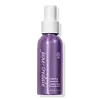What's inside
What's inside
 Key Ingredients
Key Ingredients

 Benefits
Benefits

 Concerns
Concerns

 Ingredients Side-by-side
Ingredients Side-by-side

Water
Skin ConditioningAloe Barbadensis Leaf Juice Powder
Skin ConditioningLeuconostoc/Radish Root Ferment Filtrate
AntimicrobialChamomilla Recutita Flower Extract
MaskingLavandula Angustifolia Flower
Skin ConditioningWater, Aloe Barbadensis Leaf Juice Powder, Leuconostoc/Radish Root Ferment Filtrate, Chamomilla Recutita Flower Extract, Lavandula Angustifolia Flower, Salvia Officinalis Leaf Extract, Myrothamnus Flabellifolia Extract, Propanediol, Ascorbic Acid, Citric Acid, Lavandula Intermedia Flower/Leaf/Stem Oil
Ingredients Explained
These ingredients are found in both products.
Ingredients higher up in an ingredient list are typically present in a larger amount.
Water. It's the most common cosmetic ingredient of all. You'll usually see it at the top of ingredient lists, meaning that it makes up the largest part of the product.
So why is it so popular? Water most often acts as a solvent - this means that it helps dissolve other ingredients into the formulation.
You'll also recognize water as that liquid we all need to stay alive. If you see this, drink a glass of water. Stay hydrated!
Learn more about Water